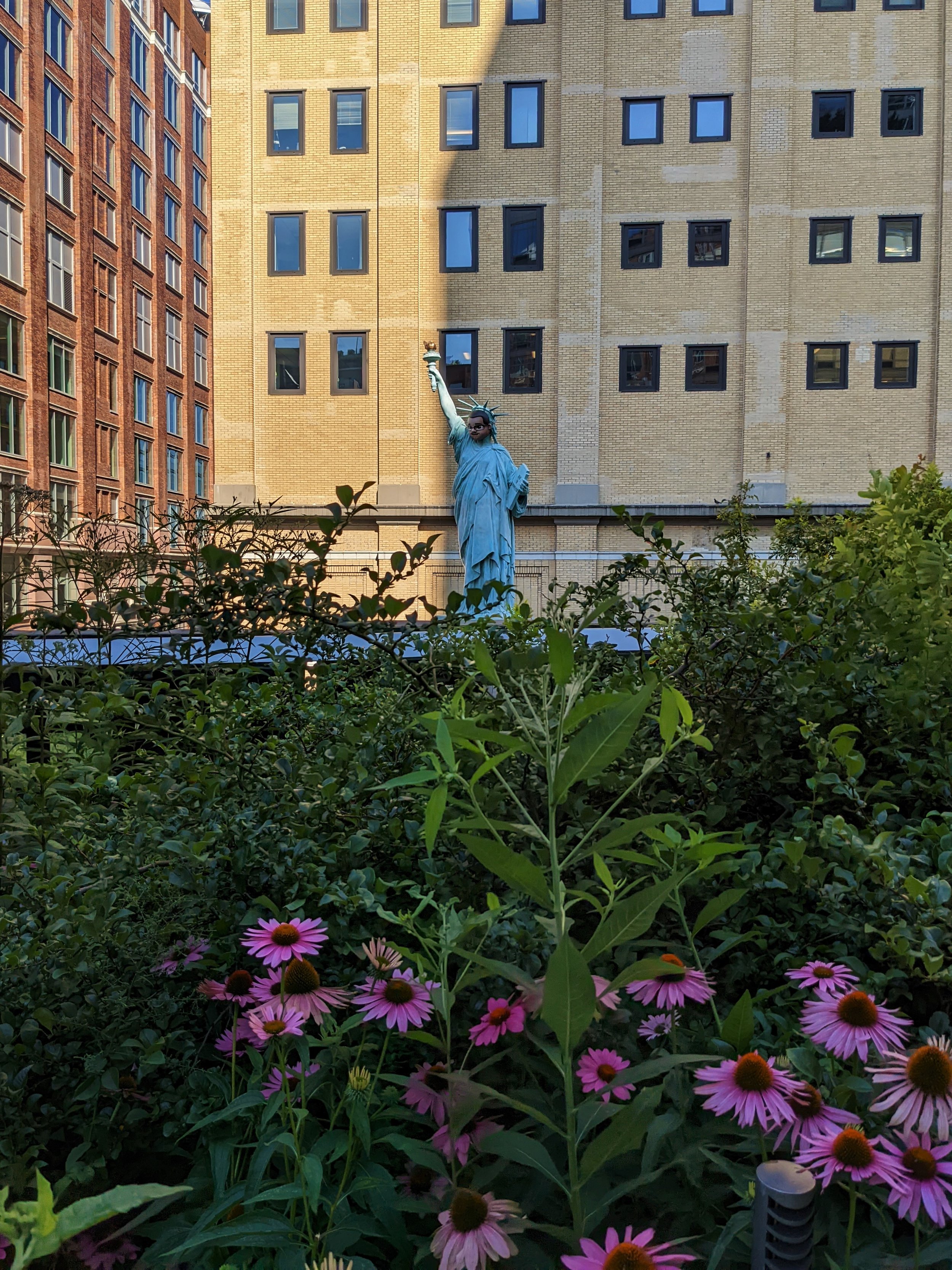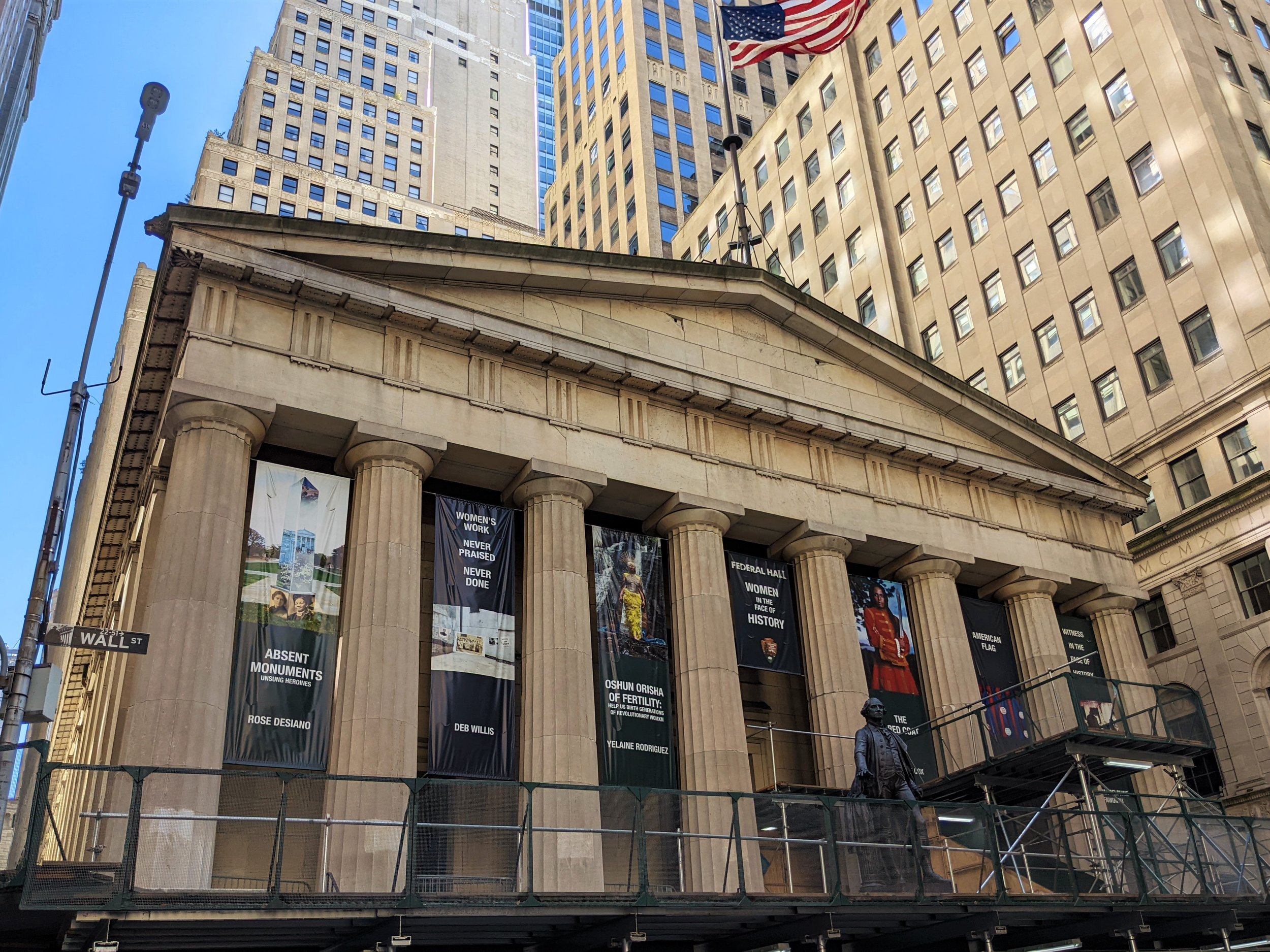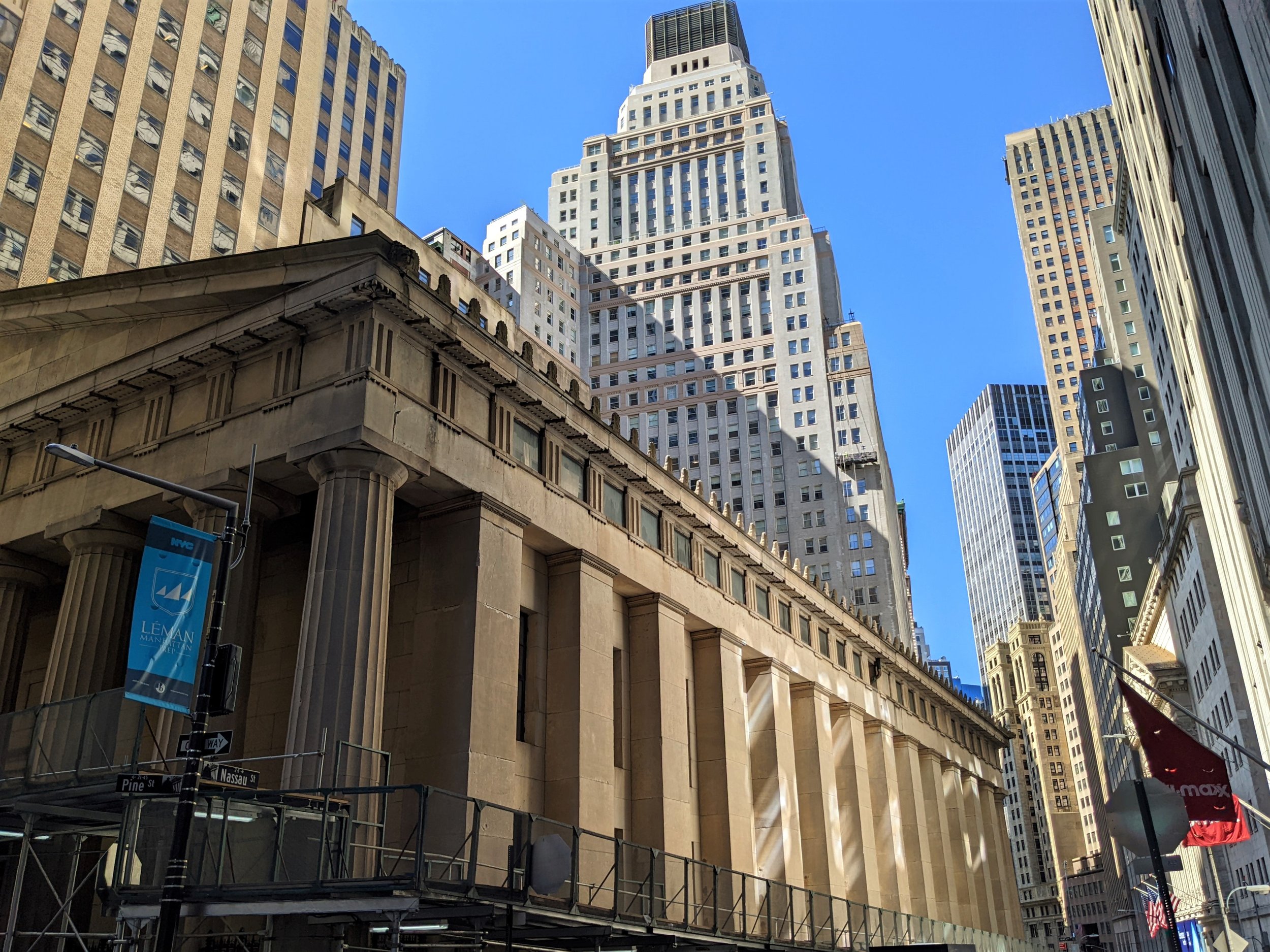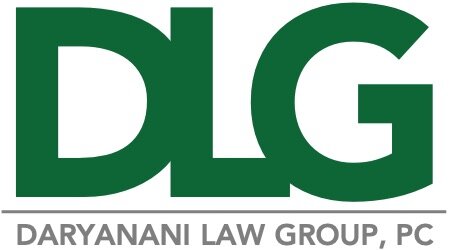The bronze Charging Bull statue that has come to represent the US stock market has been on display in Manhattan’s Financial District since 1989. Nearby, in the Meatpacking District, a brand-new bronze bull sculpture is on view. Mexican sculptor Enrique Cabrera’s El Toro de Oro, which translates to ‘The Golden Bull,’ is an homage to the neighborhood’s past and future. The butcher block-inspired pedestal is a nod to the slaughterhouses and meat packing and processing plants that once defined the neighborhood. The shiny, multifaceted sculpture sparkles in the sunlight atop this platform, celebrating the neighborhood’s reincarnation as a vibrant nightlife and high-end food epicenter. The contrast is “a visual representation of the Meatpacking District’s immense transformation over the last two decades.”
El Toro de Oro by Enrique Cabrera
Immigrants have Always Been Essential Workers
"You Know Who I Am" by Paola Pivi


The Statue of Liberty stands in New York Harbor and has welcomed people to New York since 1886. For decades, immigrants processed through Ellis Island saw the enormous copper statue upon arriving at US shores. Though Ellis Island no longer processes arrivals to the US, the statue remains an iconic symbol of freedom and welcome. In a new work called “You Know Who I Am,” on view on the High Line in New York City, artist Paola Pivi has repurposed the image of the statue to reflect on those ideas of freedom and welcome in the US today. She created a smaller-scale replica of the Statue of Liberty and added a series of emoji-style masks, each representing “an individual whose experience of freedom is connected to the United States, offering the sentiment that anyone could be represented within the symbol of the statue.” Currently, the mask portrays Marco Saavedra, “an artist, poet, restauranteur, longtime immigrant rights activist, and community organizer based in the South Bronx.” After many years of activism and organizing, Saavedra set a legal precedent for undocumented activists when he was granted political asylum in 2021. The image of his face on the iconic statue puts the history of American immigration in conversation with the modern immigration landscape.
Listen to an interview with Mr. Saavedra here.
Once and For All Fix Our Broken Immigration System
Languages of New York City
Click on the image to explore the interactive map
New York City’s linguistic diversity is astonishing – the relatively small area is home to speakers of over 700 different languages and dialects. The Languages of New York City map documents over 1200 distinct “neighborhoods, community institutions, restaurants, and other locations where there is, or was, at least one speaker” of a language. The original language of the area was Lenape, spoken by the indigenous people who occupied what is now New York City. That language is still spoken by the descendants of those original New Yorkers, and there are ongoing initiatives to teach the Lenape language to more people. While Lenape is the language that has been spoken in this area the longest, there are hundreds of other languages brought to the city by immigrants from every corner of the globe. Within walking distance of Daryanani Law Group’s office, the Language Map pinpoints more than a dozen locations where someone speaks languages from Europe, Asia, Oceania, Africa, and the Americas. This is a map is a fascinating portrait of New York’s diverse immigrant communities, “our greatest and deepest asset.”
No One Puts their Life at Risk if the Border is Open
Renaissance Women by Alice Mizrachi
The Harlem Renaissance was the period from the 1910s through the mid-1930s when the New York City neighborhood of Harlem became the centerpiece of African-American culture, bursting with Black artists, poets, musicians, writers, dancers, and activists. “Renaissance Women,” by New York-based artist and educator Alice Mizrachi, is a sculpture of an abstracted feminine face. It looks like a line drawing inscribed in the air, as it is made of a single metal tube. Fittingly, the sculpture stands in Marcus Garvey Park in East Harlem, which is named for Harlem Renaissance activist Marcus Garvey. The sculpture honors the women of the Harlem Renaissance, like Zora Neale Hurston, Josephine Baker, Bessie Smith, Ethel Waters, Billie Holiday, Dorothy West, Augusta Savage, Lois Mailou Jones, and many more. Many of these women are still household names, and their lives and their work are still influential for scores of artists working today.
Recall Our History as a Nation of Immigrants
New York City’s Federal Hall


Nestled on Wall Street among the skyscrapers of lower Manhattan sits a historic landmark which has been a major seat of local and national government since before the American Revolution. Originally the site of New York City Hall, this spot has been a center of political activity since the 18th century: the Stamp Act Congress was held here to protest “taxation without representation,” and in the wake of the Revolutionary War, it was where the shape of the new nation was decided. The Continental Congress, which at that point was known as the Confederation Congress, met here between 1785 and 1789. Following the ratification of the Constitution in 1788, New York City was proclaimed the first capital of the United States. The same building, now known as Federal Hall, was the location for George Washington’s inauguration as the nation’s first president. It was here that the first United States Congress, made up at that point of exclusively white, property-owning men, met in 1789 and wrote the Bill of Rights, expanding and defining some of the rights of offered in America. Federal Hall also witnessed the nation’s first lobbying campaign, as abolitionists voicing their opposition to slavery prompted the new government’s first explosive debate over rights in 1790. The balance of power between the federal and state governments was hotly debated in this building – a debate which continues to this day. This Independence Day, the echoes of this landmark building’s rich history and this nation, where rights and liberties have been altered and debated again and again, seem more relevant than ever.








